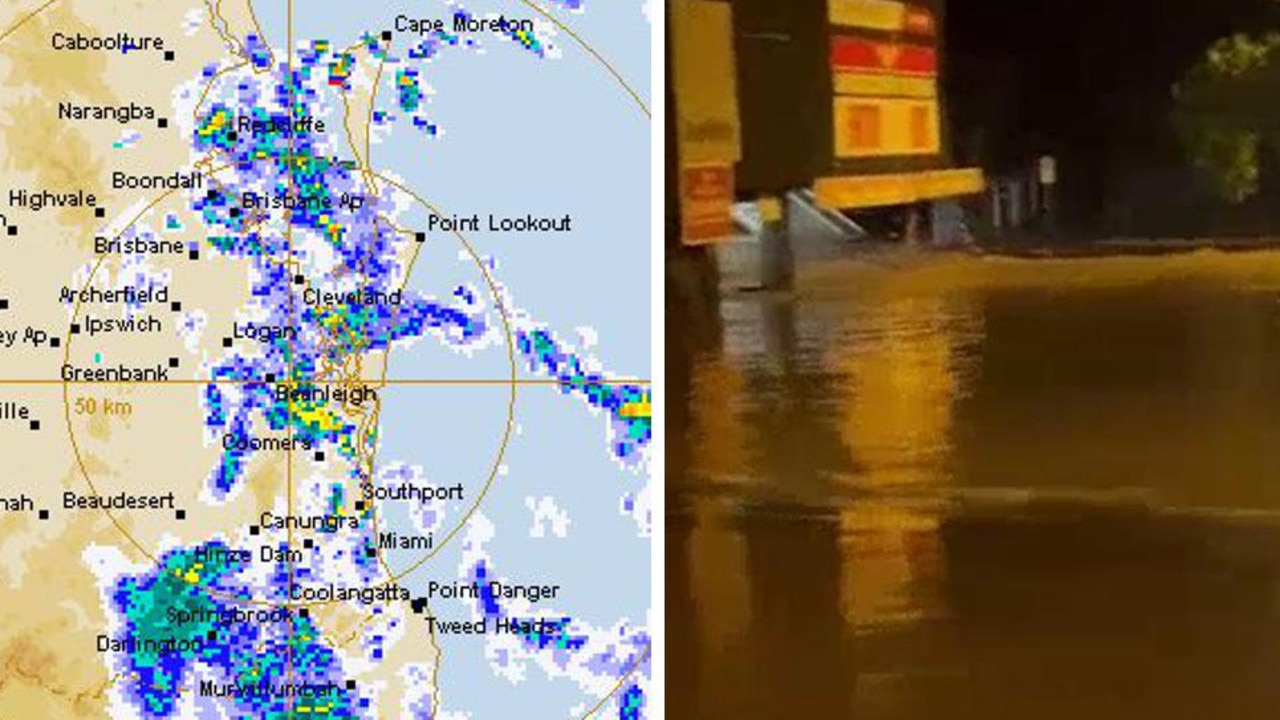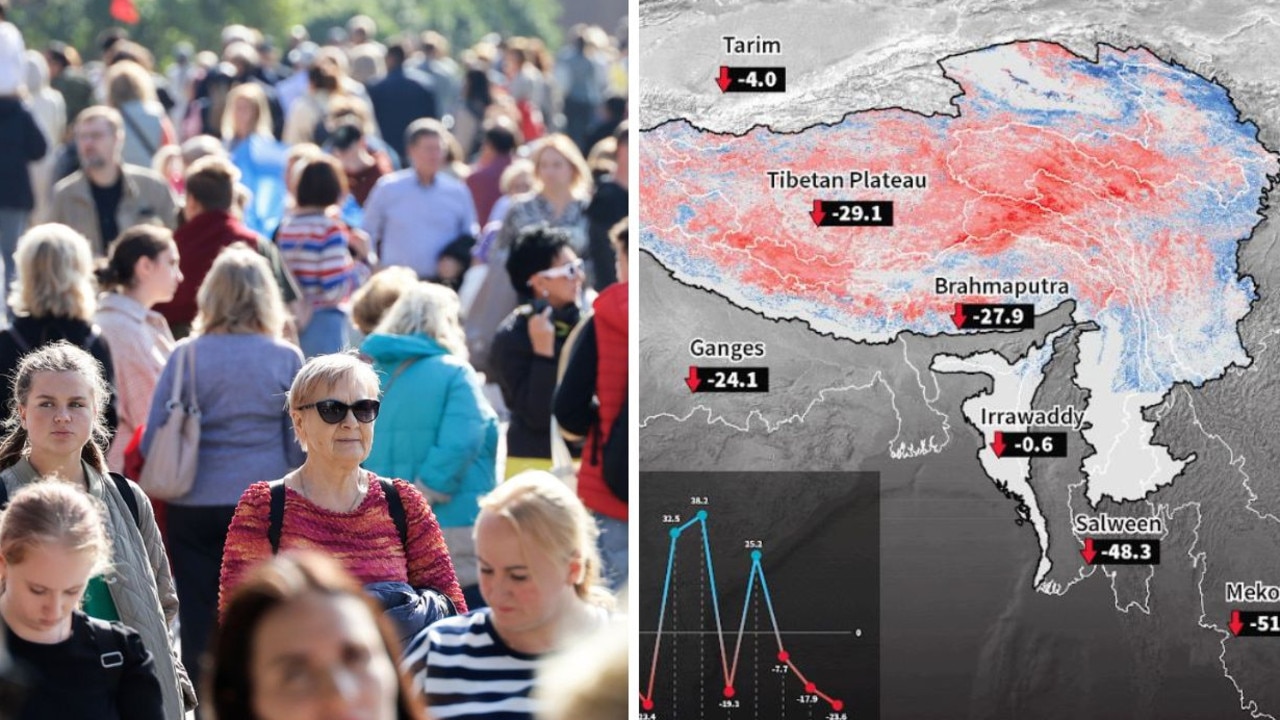Nine effects of climate change that will make your life a living hell
Look forward to constant fires, howling hurricanes and toxic dump waterways; here are the day-to-day effects of climate change.
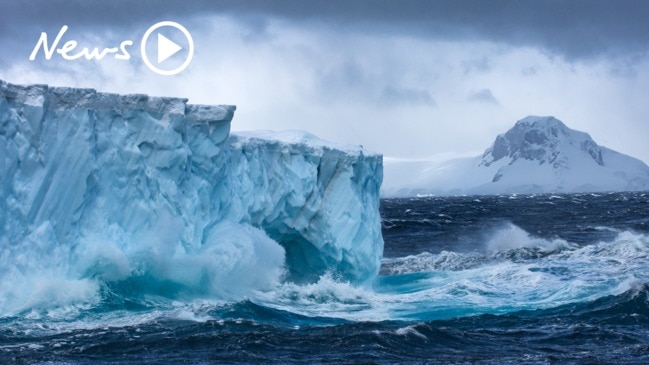
Heed the warming. Climate change is no longer something to fear in the distant future — it’s already here.
Earth’s temperature has already risen 1.8 degrees Fahrenheit since the start of the Industrial Revolution around 1750, and we’re already on track for warming 2.7 degrees as soon as 2030, according to a recent report released by the UN’s Intergovernmental Panel on Climate Change (IPCC).
That 2.7-degree increase is the thin red line that scientists have drawn, above which Earth descends into an uninhabitable hellscape that bears little resemblance to the planet we currently call home.
“The pathways to stay under 1.5ºC (or to get back under 1.5ºC once we overshoot) require sustained efforts to reduce net emissions starting now, and continuing through the whole century,” Gavin Schmidt, a climate scientist and director of the NASA Goddard Institute for Space Studies, told The New York Post.
“There is a real difference in outcomes if we stabilise at 1.5ºC, or at 2ºC or at 3ºC or at 4ºC, with damages going up steadily the warmer it gets — sea level rise, heat, fires, storm intensity, Arctic sea ice etc. are all sensitive to this. Without action on emissions, we aren’t going to stabilise at all.”
By the end of the century, the US could be three to 12 degrees (1.6ºC to 6.6ºC) hotter if the nation doesn’t reduce the level of greenhouse gases in the atmosphere, according to the National Climate Assessment released last week.
When asked about his perspective on a world in which humans do nothing to lower their emissions, environmentalist Bill McKibben had an ominous response.
“If not hell, then a place with a similar temperature. We have in the Earth’s geological record some sense of what happens when you run carbon levels up to the levels we’re running them now — it gets a lot hotter,” he told Business Insider last year.
But Earthlings don’t need to wait until 2100 to see the effects of climate change. Already, our degraded planet is grappling with droughts, deadly hurricanes, 20cm of sea level rise, raging forest fires and record-breaking heatwaves.
Here’s a look at how vulnerable we already are to climate change, and what we stand to lose in the coming decades.
1 . HURRICANE HELL
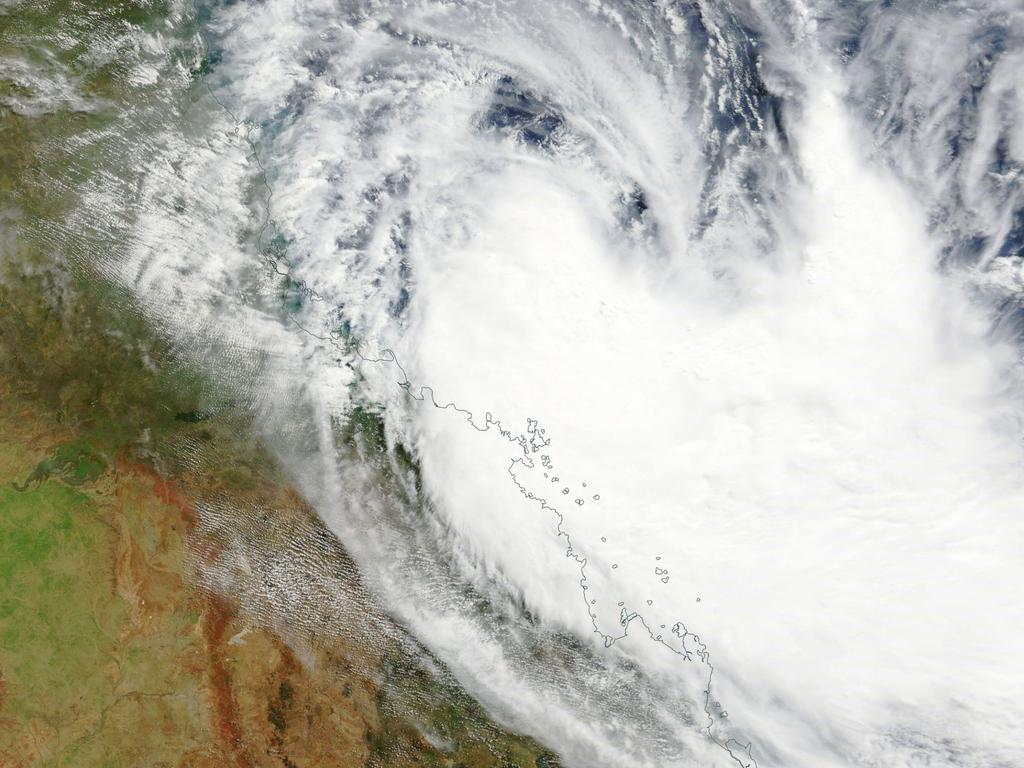
Hurricanes and tropical cyclones are some of the most destructive extreme weather events on the planet. NASA has declared them “the most violent storms on Earth”.
And what we’ve experienced recently is just a taste of what Mother Nature will hurl at us in years to come.
The superstores that have been raging this century are literally off the charts. Scientists are considering adding a category 6 to the current five-category rating system. The new level will account for monster storms with winds in excess of 321km per hour.
The first of these have already appeared. Hurricane Patricia, which ravaged Mexico in 2015, was the most intense storm to ever make landfall, packing winds up to 346km per hour.
Since 2000, the Atlantic has averaged three major hurricanes, defined as a Category 3 or greater, per year — up from two in the previous century. By 2100, there could be five to eight major hurricanes per year, according to a study published in the journal Science.
We won’t have to wait until 2100 to experience hurricane hell.
A recent climate model from the National Oceanic and Atmospheric Administration (NOAA) simulated changes to the Earth’s atmosphere and predicted that between 2016 and 2035, the world will experience 11 per cent more major hurricanes, according to a study published by the American Meteorological Society.
How does a warming planet create more, and stronger, hurricanes? Oceans have absorbed about 93 per cent of the heat trapped on Earth by greenhouse gases. Those warmer waters evaporate, putting more water in the air that can come down as rain.
In addition, hotter ocean surface temperatures make storm surges more severe, speed up the rate at which storms intensify, and provide storms with more energy, according to the NOAA.
Hurricane Florence in the Carolinas this September killed over 40 people and caused nearly $US17 billion ($AU 23 billion) in damages.
Despite having been downgraded from a Category 4 storm to a Category 1 by the time it made landfall, Florence dumped 76cm of rain on parts of the Carolinas, making it the second-rainiest storm in 70 years.
It was surpassed only by Hurricane Harvey in 2017, which inundated Texas with 152cm of rain.
A recent study from Stony Brook University and the National Center for Atmospheric Research concluded that Florence was made 50 per cent worse as a result of climate change.
This escalating cycle has deadly and devastating consequences, especially to coastal infrastructure and the US economy.
As intense flooding from these storms continues to increase, the costs are growing exponentially.
Hurricanes, already the most expensive extreme weather event, currently cost the US an average US$28 billion ($AU38.2 billion) in damages.
Those costs are projected to rise as much as 40 per cent by 2075, according to a report from the Congressional Budget Office.
In addition to breaking the record for most expensive hurricane season, 2017 boasted the highest ocean temperature on record as well as the largest number of rapidly intensifying storms.
Hurricane Maria stunned forecasters when it transformed from a Category 1 storm to a Category 5 behemoth in just 24 hours, completely devastating Puerto Rico as a result.
Climate change will increase the number of these rapidly intensifying storms, according to Kerry Emanuel, a hurricane theorist at MIT.
“A storm that intensifies (112km per hour or greater) in the 24 hours just before landfall, occurring on average once per century in the climate of the late twentieth century, may occur every five to 10 years by the end of this century,” Mr Emanuel said in a study published by the American Meteorological Society.
What scares the Goddard Institute’s Gavin Schmidt the most is that many nations are woefully unprepared to deal with these disasters over and over again due to a lack of resilience — leaving thousands dead, and millions homeless or without power in their wake.
“Look at the response to Katrina, to Sandy, to Harvey, to Irma in Barbudo and to Maria in Puerto Rico,” he said.
“You know all the bad things that make you think, ‘Oh my God, you know this is terrible, we have people dying in the streets because they can’t get to a hospital’.”
2. CRASHING REAL ESTATE MARKET
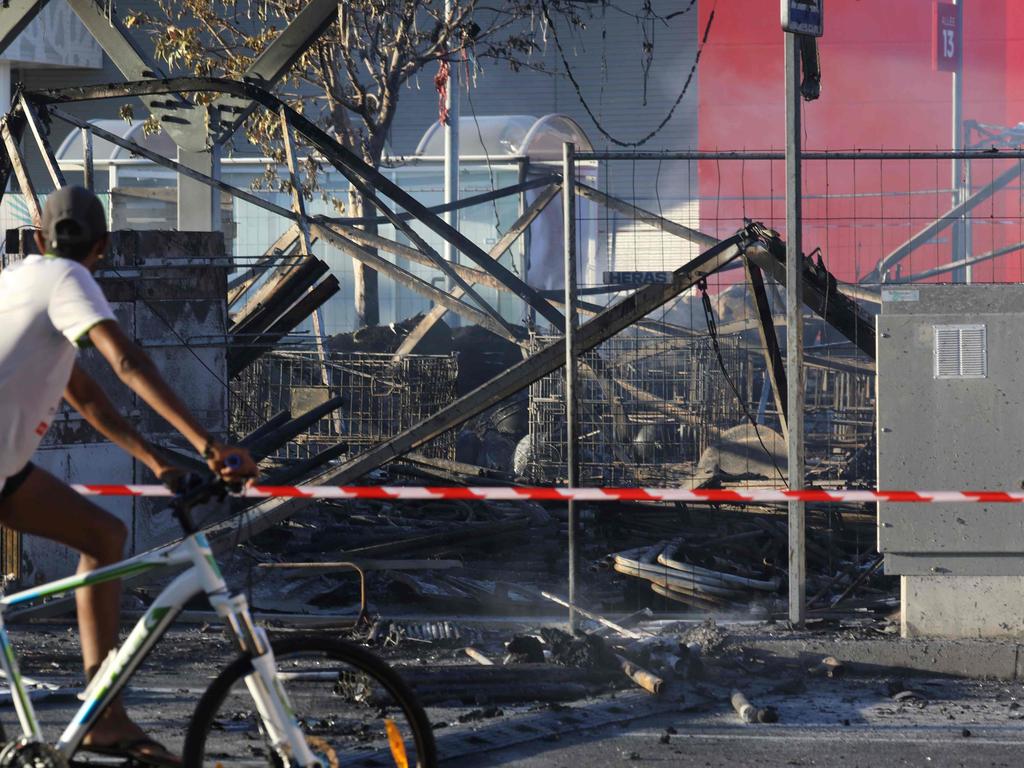
Rising sea levels and increasingly destructive storms could ravage property values along the East Coast in the coming decades, Mr Schmidt predicted.
“I think it’s likely that in certain parts of the country, you’ll see a total crash in property prices,” he said.
Data backs up Mr Schmidt’s forecast. Losses and damages along the Eastern Seaboard and the Gulf of Mexico are expected to top a whopping $US7.3 billion ($AU 9.9 billion) as soon as 15 years from now.
Flash forward to 2050 and US$106 billion ($AU44.8 billion) worth of coastal property in America could be underwater, according to a Risky Business Report. These property losses from rising sea levels should hit the Southeast and Atlantic coasts the hardest.
By 2100, 1.9 million US homes, worth nearly $US 1 trillion, could be at risk of flooding, according to a Zillow report. Around half of those homes are in Florida. The National Climate Assessment echoed the risk of flooding in the Sunshine State.
“Florida alone is estimated to have a 1-in-20 chance of having more than US$346 billion (AU$472.7 billion (in 2011 dollars) in property value … below average sea level by 2100.”
3. CLIMATE CHANGE KILLS THE INTERNET
Internet access may be a staple of the modern world, but climate change poses a “devastating threat” to the infrastructure that supports it, according to a recent study.
About 4,000 miles of fibre conduit will be underwater and over 1,000 collocation centres will be surrounded by water in the next 15 years, according to researchers from the University of Wisconsin and the University of Oregon, who analysed data from the Internet Atlas repository of internet infrastructure and the NOAA’s Sea Level Rise Inundation.
The study concluded that New York, Miami and Seattle were “the most vulnerable areas” and that CenturyLink, Intelliquent and AT & T were the service providers with the highest infrastructure risk.
New York City, which suffered outages after Sandy, is taking steps to secure networks in the event of future climate disasters.
“The City is engaged in an ongoing dialogue with telecom providers regarding the resiliency of their networks and facilities in light of the risks of climate change such as hurricanes and sea level rise,” Priya Shrinivasan, director of policy, standards and legal affairs at the mayor’s Office of the Chief Technology Officer, said in a statement obtained by Axios.
4. UNDERWATER NAVY
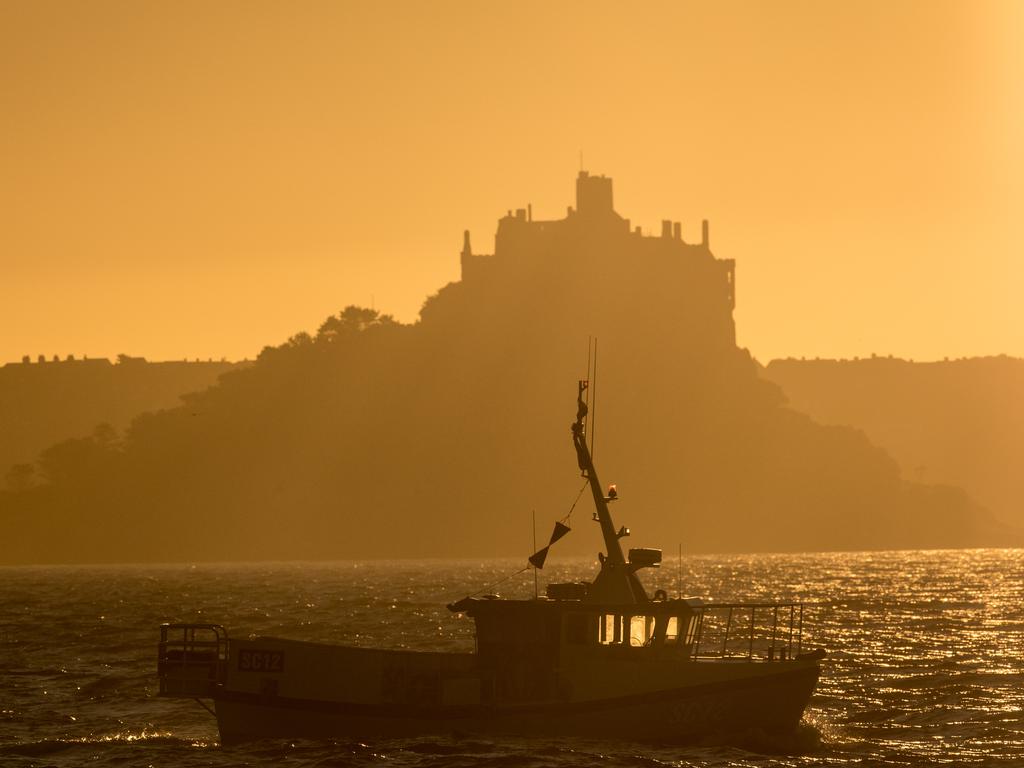
The US Navy is facing a formidable new enemy — sea level rise. Naval Station Norfolk in Virginia, the world’s biggest naval station and home to the largest concentration of naval forces in the country, is literally sinking beneath the waves.
Joe Bouchard, Naval Station Norfolk’s commanding officer from 2000 to 2003, recalled that rising seas have already forced the Navy to replace old piers.
“Sea level rise was causing electrical outages on the pier for the boats. The ships couldn’t train,” Mr Bouchard said.
The Navy built new double-decker piers that allowed for a foot of rising sea levels. But they underestimated the scope of the problem. Mr Bouchard believes the sea level rise could overwhelm the new piers as soon as 2030.
Compounding the problem: Sailors and supplies need to be able to get to the base. Rising sea levels are threatening to swamp the area’s roads and could hinder the roughly 83,000 active-duty service members from getting to their jobs.
5. REFUGEES: WE AIN’T SEEN NOTHING YET
The United Nations predicts that by 2020, nearly 50 million people worldwide will be displaced from their homes as a result of climate change. Some estimates say that number could reach as high as 1 billion by 2050.
Since the 2011 onset of the Syrian civil war, more than five million refugees have fled the devastated country for Europe.
The drought that preceded the war was the worst in the past 900 years. This “exceptional” weather event was likely exacerbated by climate change, said Benjamin Cook, a climate scientist at Columbia University and NASA.
Climate change will continue to aggravate Europe’s refugee crisis exponentially over the next two decades, according to retired US Marine Corps Brigadier General Stephen Cheney.
“See what happens when climate change drives people out of Africa — the Sahel [sub-Saharan area] especially — and we’re talking now not just 1 or 2 million, but 10 or 20 (million),” he told the Environmental Justice Foundation.
“They are not going to South Africa, they are going across the Mediterranean.”
A direct correlation between warming temperatures and migration has now been established.
A recent study at Columbia University found that asylum applications spiked from those countries that had experienced warming beyond the temperatures optimal to grow crops.
The recent IPCC report also cites changes in agriculture as a driving force behind migration.
“I think there’s no question that we’re seeing an increase in migration from agriculture already and that’s only going to increase,“ said Kristen Hite, climate policy lead at Oxfam, referencing the IPCC findings.
“We know that extreme weather causes disruptions to food supply and if you can’t grow food on your land, what choice do you have but to leave.”
6. THE HUMAN CESSPOOL — NO, REALLY

Swimming in poop at a local beach or wading through soiled streets is more than a cringeworthy thought — it’s a dangerous reality.
Usually sewer systems carry wastewater to a treatment plant, but storms, heavy rains and floods can overwhelm the system and send raw sewage into streets and rivers, onto beaches — and even into drinking water.
“Once you get sewage on things, you have a really high risk of disease transfer,” said Debra Tillinger, adjunct visiting scientist at the American Museum of Natural History.
In the US, 772 cities are at risk for this kind of water pollution, according to the Environmental Protection Agency. Florida is particularly risk-prone. After Hurricane Irma in 2017, more than 28 million gallons of wastewater sloshed across the Sunshine State.
Human sewage isn’t the only fecal threat people face following a big storm. Hurricane Florence overwhelmed at least 50 of North Carolina’s hog poo lagoons — open-air ponds where farmers store pig excrement.
When such lagoons break or flood, hog waste and stormwater mix, exposing people who live close to the farm to contaminated water. The foul water, after spreading to streams and rivers, also puts local ecosystems at risk.
7. EXTREME HEAT
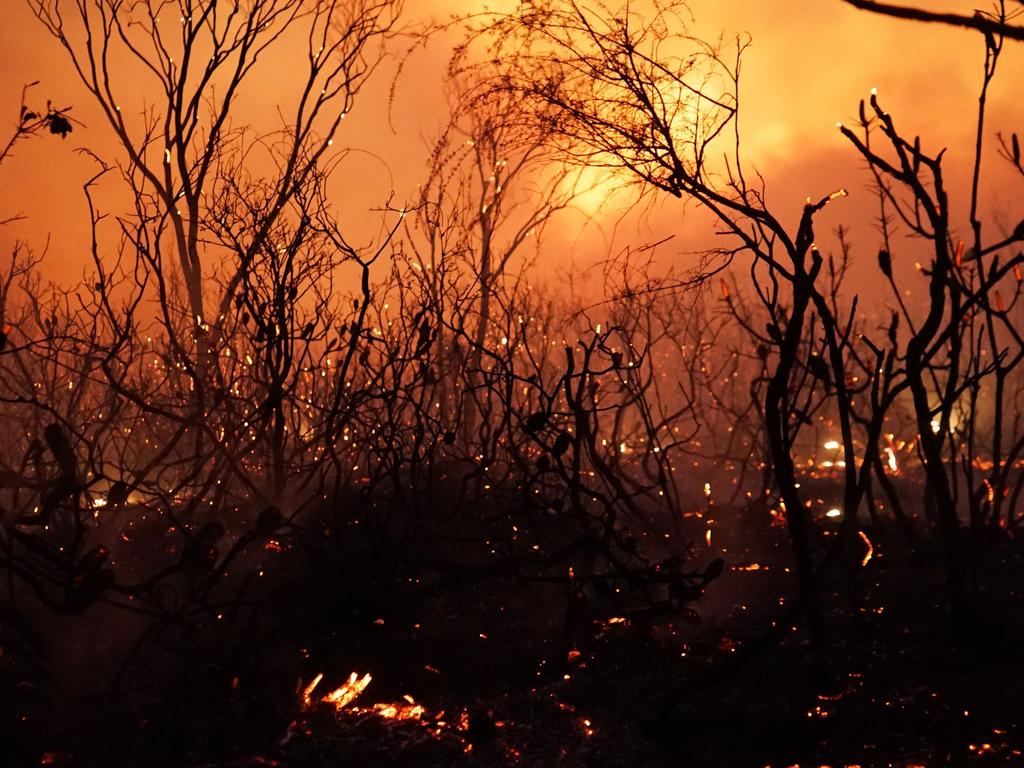
This past summer saw record-breaking temperatures across North America, Europe, the Middle East and Asia.
In July, at least 80 million people across 14 US states sweltered under a heat advisory warning, CNN reported.
Death Valley suffered its hottest July ever, with four consecutive days of 52 degrees (127 degrees F). A heatwave in Japan killed at least 65 people in one week, and sent another 23,000 to local hospitals, The Washington Post reported.
These soaring temperatures are part of a greater trend. With the exception of 1998, the warmest years on record have all occurred after 2000, according to the CDC.
By 2050, every summer will be hotter than the one before, according to a study published in the journal Earth’s Future.
And by the end of the century, three out of four people could be exposed to heatwaves every year — with deadly consequences. In a worst-case climate scenario, the city of Phoenix, Arizona, could have as many as 150 days per year above 37 degrees (100 degrees Fahrenheit) by the end of the century, the National Climate Assessment found.
“The infrastructure for very, very hot weather just doesn’t exist in lots of parts of the world, even well-developed parts of the world,” Gavin Schmidt said.
“The 2003 heatwave killed something like 50,000 people in France, not because French people are particularly sensitive to heat or anything, but because the infrastructure that allows you can live with that level of heat just doesn’t exist.”
One solution could be installing more air conditioners in more parts of the world. However, not only would building more air conditioners cost more money, it could worsen climate change.
The number of air conditioners worldwide is expected to grow from 1.6 billion units to as many as 5.6 billion units by 2050.
“Twenty-one per cent of the total world electricity growth is coming from the need to meet the growth of air conditioner electricity demand,” Fatih Birol, executive director of the International Energy Agency, told T he New York Times.
The electricity needed to power them could overburden electrical grids, thereby increasing emissions. Airconditioners, which vent hot air outside, could literally make the air warmer.
8. UNCONTROLLABLE FOREST FIRES
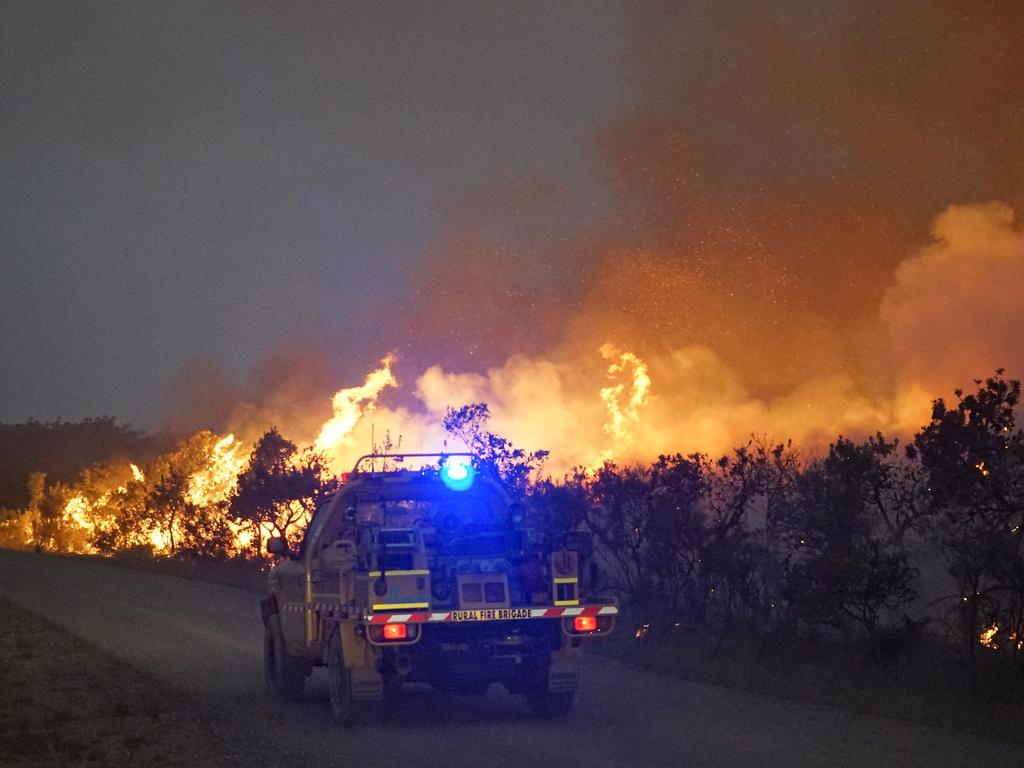
The planet is burning. Wildfires, described by some witnesses as “apocalyptic hellscapes,” scorched their way across the western US, Europe and Siberia this summer.
In 2018 alone, the US has seen more than 46,000 fires spanning more than 28,327 square kilometres of land — nearly 11,000 square miles, or about 88 per cent of Connecticut.
The loss of life in November has been particularly tragic: At least 87 people died in California’s Woolsey Fire and Camp Fire. The latter was the deadliest wildfire in the state’s history.
The season was the most destructive as well. Insured losses could reach $US13 billion ($AU17.8 billion), according to an assessment from Risk Management Solutions.
In 1995, fighting fires accounted for just 16 per cent of the US Forest Service’s annual budget. Forest fires now consume over 50 per cent of the annual budget and that number could rise to 67 per cent, or an increase of $US1.8 billion ($AU24.6 billion, by 2025, according to the US Department of Agriculture.
Europe is also seeing a serious uptick in blazes. The massive fire in Greece this summer was the deadliest on the continent since 1900, according to the Centre for the Research on the Epidemiology of Disasters in Brussels.
The fire killed at least 91 people, damaged 2,000 homes and burned 17,000 acres (about 27 square miles) of land and residential areas.
A warming and drying planet is likely to blame for the surge in devastating forest fires, according to scientists.
“Climate change makes fires more likely because it dries out the ground. You have warmer weather and as soon as you have warmer air, you can evaporate more water,” explained Debra Tillinger of the American Museum of Natural History.
In addition to polluting the air we breathe, forest fires make climate change worse by pumping out more greenhouse gases, thereby leading to warmer temperatures, which increases the likelihood of even more fires.
“Forest fires take trees — which are carbon in not-bothering-anyone form — and they turn it to carbon dioxide,” Ms Tillinger said.
9. FOOD
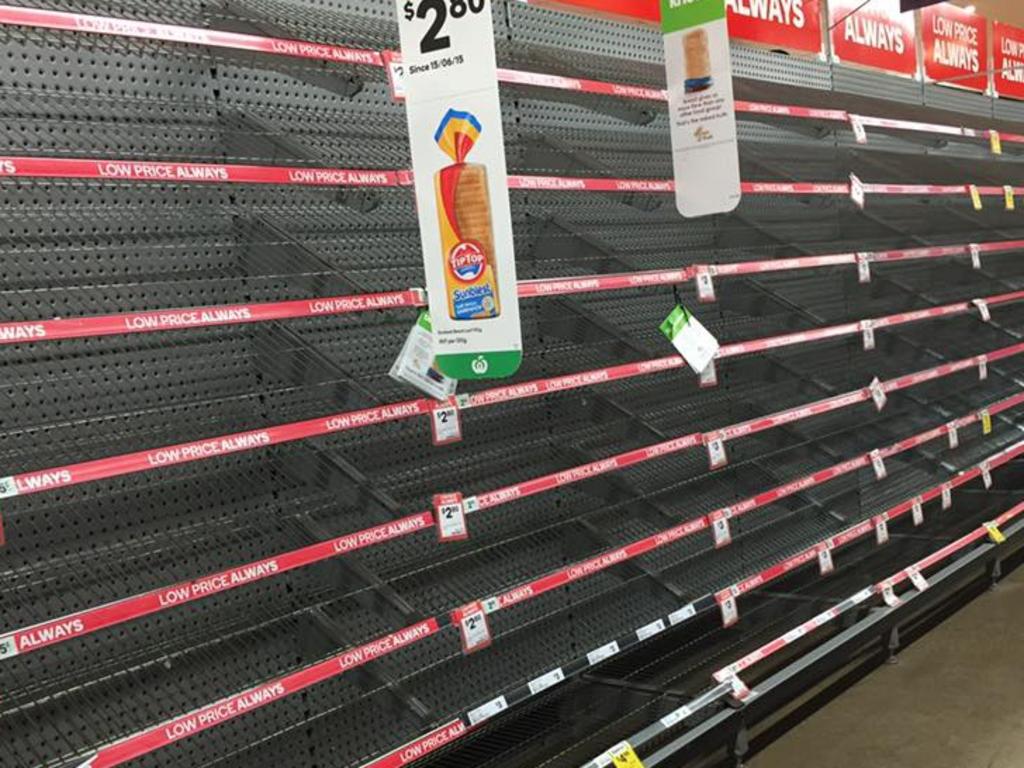
Climate change was one of the leading causes of global hunger last year, according to reports released by the UN’s Food and Agriculture Organisation (FAO) and the IPCC.
“We know more than 800 million people were undernourished in 2017. That’s one in nine people globally. We also know from these research studies, more complex frequent and intense climate extremes were a leading cause of food crisis in 2017,” Oxfam’s Kristen Hite said.
South Asia, most regions of Africa, and a large portion of South America are showing intensifying signs of hunger as a result.
Crops like wheat, rice, maize and soybeans — which supply two-thirds of the world’s calories — are particularly sensitive to changing climates in both tropical and temperate regions. As temperatures rise, crop yields will drop.
“A world that is 2.7 degrees warmer is likely to have 189 million more food-insecure people, which is an increase of 20 per cent from today,” said Kathryn Milliken, policy and program adviser on climate change for World Food Programme, referencing the IPCC report.
The combination of this year’s extreme weather events and future warming and disasters are expected to deepen the hunger crisis.
Not only does warming lower crop yields, but disruptive weather events like storms and floods make food less accessible for the victims of climate disasters.
Not only does climate change impact the world’s most coveted crops, but humans’ love of factory-farmed meat, specifically beef, and dairy is detrimental to the climate.
While meat and dairy production account for just 18 per cent of the world’s calories, it contributes 60 per cent of agriculture’s greenhouse gas emissions, according to a study published in the journal Science.
Livestock produces methane farts, which is a more potent greenhouse gas than carbon dioxide.
The population is expected to grow from 7.6 billion to almost 10 billion by 2050.
In order to avoid the climate dangers associated with feeding more people, more of whom will be able to afford meat, western countries will need to cut meat production by 90 per cent, according to a study in the journal Nature.
“Between 2010 and 2050, as a result of expected changes in population and income levels, the environmental effects of the food system could increase by 50—90% in the absence of technological changes and dedicated mitigation measures, reaching levels that are beyond the planetary boundaries that define a safe operating space for humanity,” reads the study’s abstract.
10 . THE END?
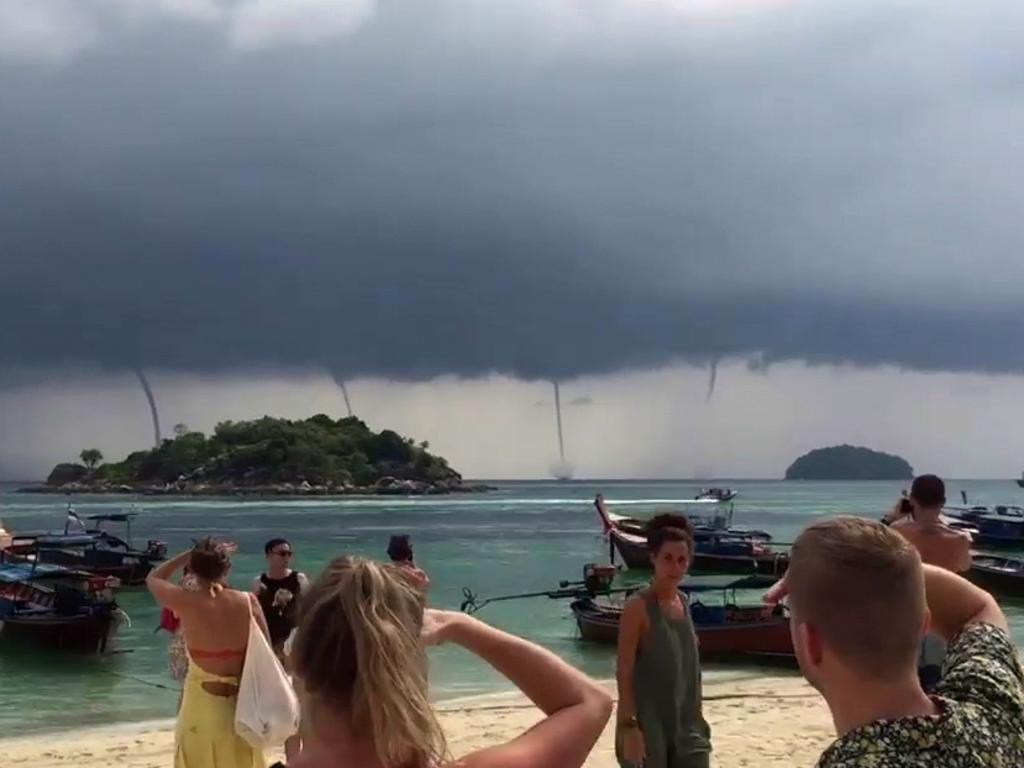
If you’re feeling a sense of psychic or existential distress resulting from environmental change, there’s a word for it: solastalgia. It’s described by some as a homesickness while still at home.
Climate will never be what it was in pre-industrial times, but “tipping-point metaphors like ‘We’ve passed the point of no return, therefore it’s all going to go to hell in a handbasket’ doesn’t follow,” the Goddard Institute’s Gavin Schmidt said.
Money is often cited as a roadblock to major change, but there’s a big misconception that acting to curb carbon emissions right now will be more costly than letting emissions pile up, explained climate journalist David Wallace-Wells, deputy editor of New York Magazine.
“Addressing climate change is much, much cheaper than dealing with its impacts,” Mr Wallace-Wells warned.
The National Climate Assessment highlighted the nation’s economic perils. Damaging weather in the US smashed records these past few years, costing nearly $US400 billion ($AU456.6 billion) since 2015, the assessment found. It’s only going to get worse.
“With continued growth in emissions at historic rates, annual losses in some economic sectors are projected to reach hundreds of billions of dollars by the end of the century — more than the current gross domestic product (GDP) of many U.S. states,” said the report.
Technology designed to capture carbon from the atmosphere — which doesn’t even exist yet — would cost significantly more than curbing emissions.
“To meaningfully stabilise to counteract the amount of carbon that we’re putting in the atmosphere right now would cost an estimated $30 trillion a year,” he said, adding that the cost of future emissions could skyrocket to $300 trillion annually.
Mr Wallace-Wells said these prices are likely to fall over time, but the longer we wait for that to happen, the less likely we are to dig ourselves out of the hole.
A perilous and uncertain path lies before us. Any meaningful solution likely involves technology that hasn’t been invented yet, and breaking an addiction to fossil fuels currently seems unthinkable.
Regardless of how we adapt — or don’t — one thing is certain: The planet we inhabit is changing irrevocably before our very eyes.
This article originally appeared on New York Post and was reproduced with permission

